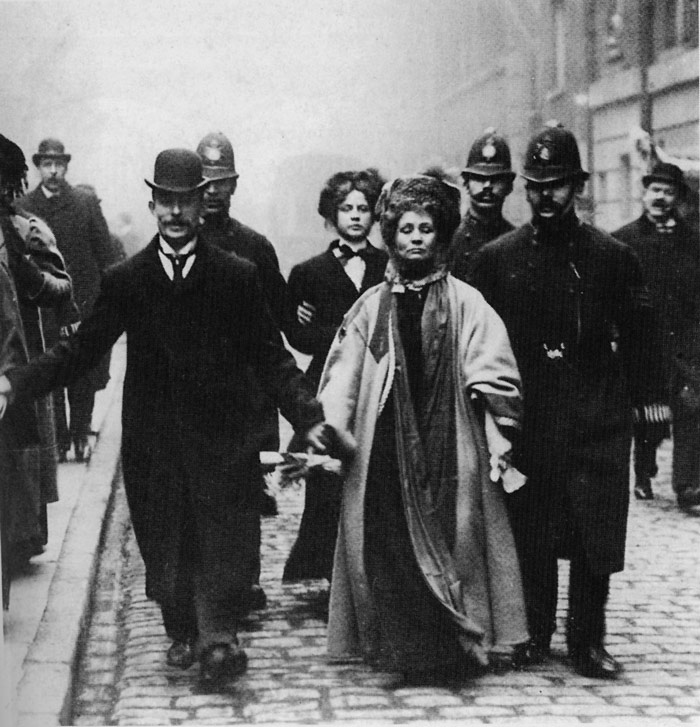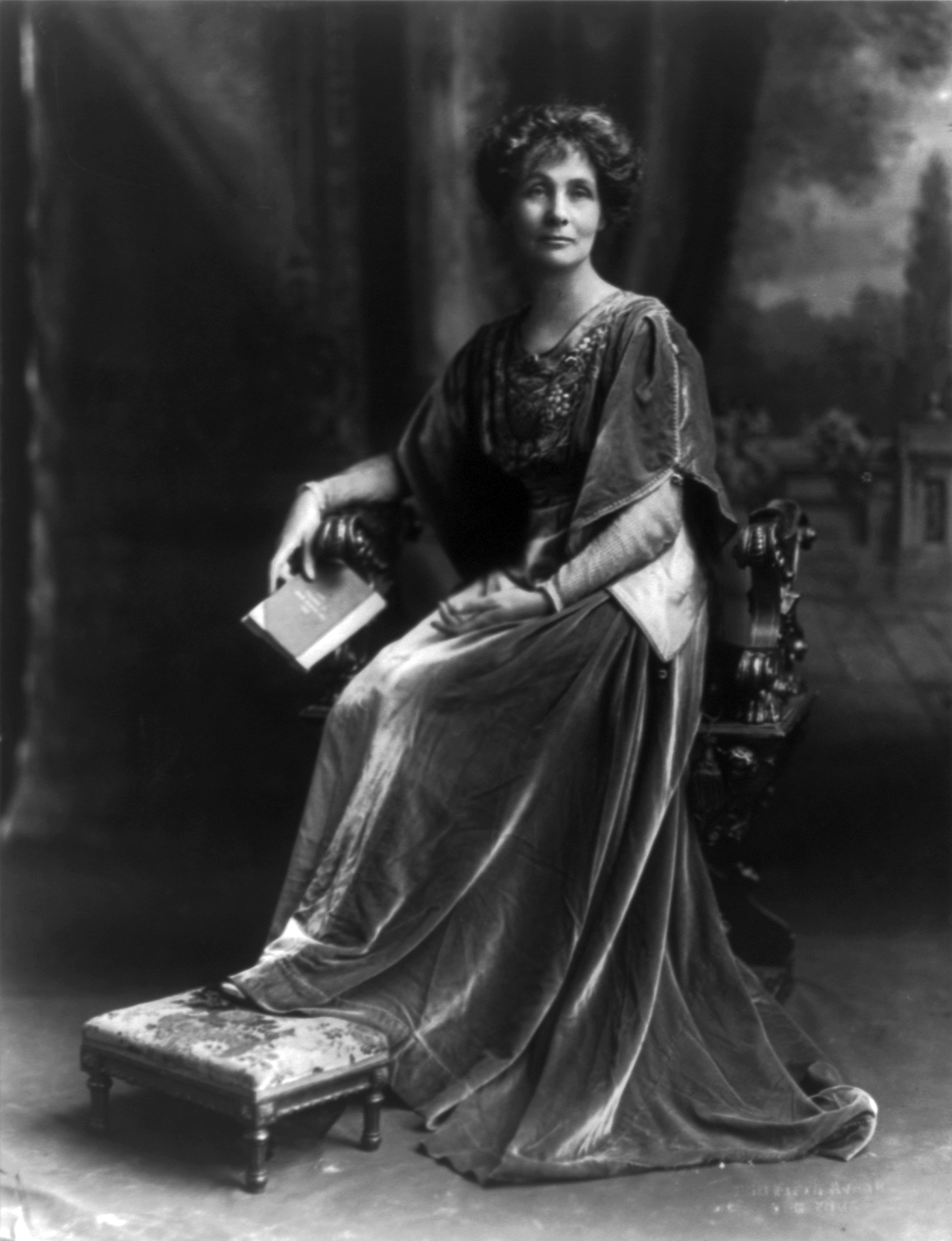Who was Emmeline Pankhurst?
I recently saw a trailer for a new movie called “Suffragette,” in which Meryl Streep portrays Emmeline Pankhurst, a political activist who championed women’s rights in Britain during the late 19th and early 20th century. I decided to find out more about this historical figure and found Emmeline Pankhurst’s story to be quite an interesting one.
A Suffragette is Born
Emmeline Pankhurst was born in July, 1858, in Manchester, England. Her mother, Sophia Jane Craine ancestors were from the Isle of Man, the first country to allow voting rights to women in 1881. Several of the men from whom she is descended charged with social unrest and slander. Her father was Robert Goulden, whose family was known for its political activity. It’s no wonder that the Gouldens included their children in social activism, since both came from this same background. They were abolitionist and supported equal rights, but still believed that the girls in the family did not need the same education as the boys. The girls were educated in-home and other skills needed to find good husbands. They didn’t believe women could attain the same goals as men. In spite of this, she attended the École Normale de Neuilly in Paris, where she learned chemistry and bookkeeping in addition to the traditional feminine arts.
Emmeline became involved in the suffrage movement at the age of 14. Lydia Becker, the editor of the Women’s Suffrage Journal, was the guest speaker at a public meeting about women’s voting rights attended by Emmeline and her mother. This meeting changed the course of her life.
Growth of the Suffragette
Richard Pankhurst was a 44 year-old barrister who advocated women’s suffrage, including freedom of speech and education reform, when he met the 20 year-old Emmeline Goulden in 1878. Although he was a confirmed bachelor (to be better able to serve the public), the two fell in love and were married on December 18, 1879. She gave birth to five children in 10 years, but that didn’t slow down her political activities. Richard hired a servant to help with the children so Emmeline could continue her activism, including the Women’s Suffrage Society.
After being involved with the National Society for Women’s Suffrage (NSWS), a split in ideology first led her to the Parliament Street Society. But, this organization ended up focusing on unmarried and widows rights to vote, leaving married women with no vote (since their husbands voted for them). On July 25, 1889, the first meeting of the Women’s Franchise League (WFL), which concerned itself with voting rights for all women, was held at the Pankhust home. The WFL was considered a radical group because it also supported equal rights for women relating to divorce and inheritance. This caused a spit in the organization and it dissolved a year later.
Emmeline eventually joined the Independent Labor Party (ILP) in 1893. The local branch denied her membership on the grounds of gender, but eventually gained admission at the national level. This led to activism beyond the right to vote for women. She was instrumental in changing workhouse conditions, especially for children. ILP meetings were banned, and in 1896 she found herself in trouble with the law along with two men for violating a court order against the meetings. She did not have to go to jail, and ILP meetings were eventually allowed. However, the incident took a toll on her health.
Her husband’s health was also an issue and he died suddenly in 1898 of complications from an ulcer, before Emmeline could return to be at his side. She then took a job as Registrar of Births and Deaths in the town of Chorlton, which provided a lot of insight into the realities of being a woman living in the region. This reinforced her stand that women needed the right to vote in order for their conditions to improve. Her election to the Manchester School board in 1900 opened her eyes to new examples of unequal treatment of and limited opportunities for women.
Recollections has a wide range of Edwardian era fashions suitable for your suffrage event. Choose from dresses, ensembles, and suits.
Credits
Information for this post was gleaned from:
http://www.biography.com/people/emmeline-pankhurst-9432764












